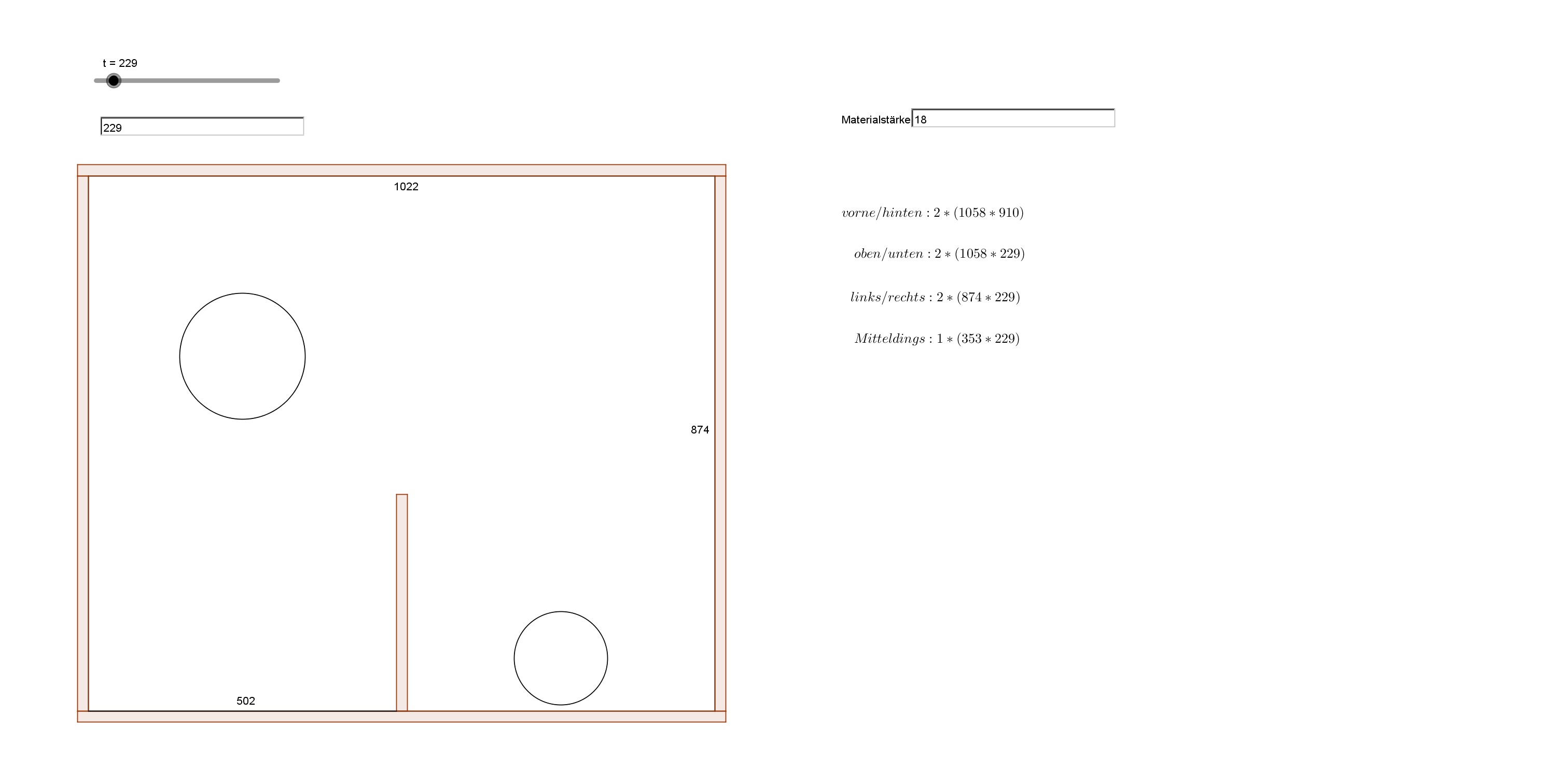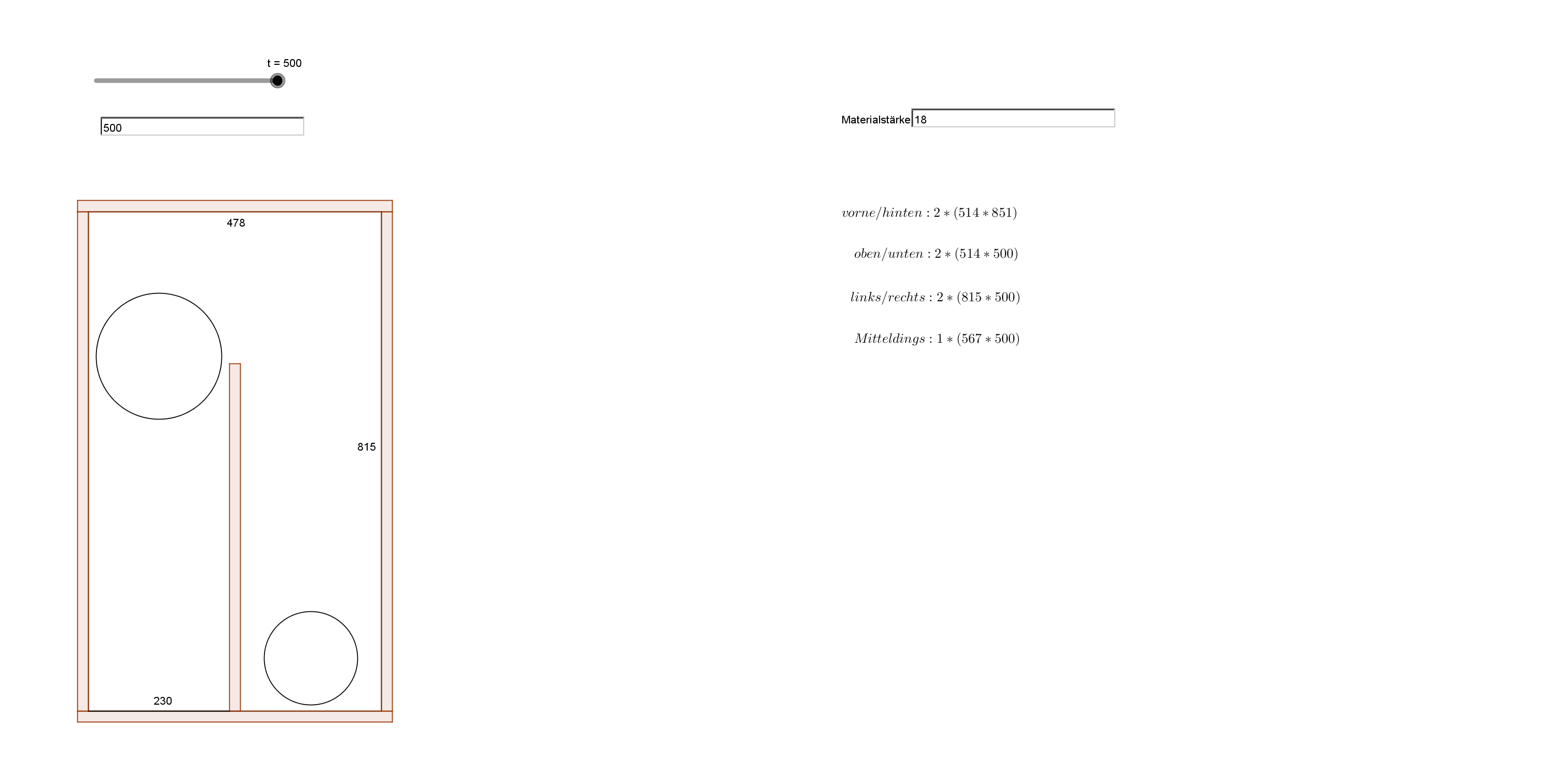The drawing looks good. I think you need to put the polyester wool damping in the closed end between the driver and the 101 mm corner. The damping wool in main space leading to opening is optional and will reduce bass output if desired.
Hi xrk971!
Around speaker damping streanu see this web page: OrdinaThor_Loudspeakers_TQWT - Tapered Quarter Wave Tube alias Voight pipe - fullrange speakers, horn, high efficiency, tqwt, multiple arrays, general audio topics>, or OrdinaThor_Loudspeakers_TQWT - Tapered Quarter Wave Tube alias Voight pipe - fullrange speakers, horn, high efficiency, tqwt, multiple arrays, general audio topics>
thank you!
Hmm, reducing the vent area [Av] will tune it lower, ditto making it longer, so for a given tuning, Av must increase if you want to lengthen it.
Since the MLTL is damping the vent enough to allow a large, efficient enough Av at only ~3/4" long, any additional damping due to a larger, longer vent would only be required if playing at high power for extended periods, so basically never in a HIFI/HT app. Worse, at least from a distortion POV is it can potentially 'color' the mids due to its pipe harmonics comb filtering with the driver's output as happens with many Onken alignments.
GM
Since the MLTL is damping the vent enough to allow a large, efficient enough Av at only ~3/4" long, any additional damping due to a larger, longer vent would only be required if playing at high power for extended periods, so basically never in a HIFI/HT app. Worse, at least from a distortion POV is it can potentially 'color' the mids due to its pipe harmonics comb filtering with the driver's output as happens with many Onken alignments.
GM
Any information on the Specks
I like what is in the PDF is really beautiful, do you have any specks on the output, what is the F3? What does it sound like? Are you happy with what you have? Would you have added a tweeter? What did you do for the crossover?
Did you finish the project?
I just got 2 BG20's and want to build a TL, I have purchased the Mathcad software but have not had time to really learn how to use it.
Thanks,
Golgiapparatus
Hi all!
See and enjoy!!
I like what is in the PDF is really beautiful, do you have any specks on the output, what is the F3? What does it sound like? Are you happy with what you have? Would you have added a tweeter? What did you do for the crossover?
Did you finish the project?
I just got 2 BG20's and want to build a TL, I have purchased the Mathcad software but have not had time to really learn how to use it.
Thanks,
Golgiapparatus
Hi everybody,
i like the Visaton BG20 and know its sound in both br- and horn-cabinets.
I found this thread by searching for tml-enclosures.
I wonder if any of the suggested cabs from this thread were built.
Maybe somebody has something similar to share for this driver?
Usually the BG20 needs some 'LCR-taming'.
How would that be in a tml/tqwt/similar design?
i like the Visaton BG20 and know its sound in both br- and horn-cabinets.
I found this thread by searching for tml-enclosures.
I wonder if any of the suggested cabs from this thread were built.
Maybe somebody has something similar to share for this driver?
Usually the BG20 needs some 'LCR-taming'.
How would that be in a tml/tqwt/similar design?
Assuming the specs are reasonably accurate, all the [ML] TL designs done with MathCad will be accurate, though keep in mind that all such programs are designed to be accurate only up to the driver's effective HF mass corner [2*Fs/effective Qts], so other than some HF harmonic rippling from the vent system the rest can be ignored.
Not familiar with the driver, but many wide range drivers need significant mids, HF response filter shaping including baffle step compensation [BSC] if not near/at a wall or corner.
GM
Not familiar with the driver, but many wide range drivers need significant mids, HF response filter shaping including baffle step compensation [BSC] if not near/at a wall or corner.
GM
Greets!
I posted this MLTL many moons ago, but don't recall anyone building it/reporting back. Note that I have three sets of specs, so used the ones that required the biggest net Vb, lowest tuning figuring it might have some tuning flexibility.
L = 60"
CSA [WxD] = 178.35"^2
zdriver = 22.8"
zport = down near/at the bottom
Dport = 6"
Lport = 0.75"
All dims i.d. [inside] and approximate. Sim is minimally stuffed. It will need some form of EQ to flatten out the bass if not corner loaded. That, or use a larger vent to tune it higher.
GM
Is 'L' the length of the whole line or the length of the cabinet with a folded line?
60" is really big!!!
i hoped to stay below 1m (~40").
So maybe i´ll try the other posted tl-design from this thread.
The Bg20 has its problems with 'real life' x-max, especially with the bass-heavy music i listen to (dub/reggae).
Visaton rates the speaker for 40W RMS.
But there is no chance to feed it with 40W rms of the full range of frequencies of heavy dub for several minutes without destroying it.
At least in the cabinets i know (45ltr br, bl-horn) it is only a good fullranger up to around 20W-25W maybe.
Considering the quite high spl, this more than enough for home use.
But i also use it outdoors (especially the br-box).
Then usually use an active low-cut, to sacrifice a bit of the long waves in favor of the amplitudes.
My idea with a t-line is to have a cab that might be bigger than my br, smaller than the horns (1.2 metres high) and still have nice spl.
Ok, the above info is more about the BG20 in general and my selfish wishes, but maybe one of you more experienced guys can point me towards a design or modifications of given designs.
it sims and plays alright in a Druid size pipe with 50sq.in. x-section - I wouldn't waste the wood on anything huge for any FR8 - the bottom is fully open and the base and adjustable gap form the port - in the US, BG20 is a nice speaker for $28 - polyfil between the whizzer and cone help a bit with the top roughness but some other 8FR are rough too




Last edited:
Is 'L' the length of the whole line or the length of the cabinet with a folded line?
The Bg20 has its problems with 'real life' x-max, especially with the bass-heavy music i listen to (dub/reggae).
My idea with a t-line is to have a cab that might be bigger than my br, smaller than the horns (1.2 metres high) and still have nice spl.
It’s the total internal path-length, so can be folded to a shorter height.
Yes, this is true of all wide BW drivers except one short lived Babb design, so to offset this, a large acoustical lever is required to extract the most usable [mid] bass out of them once room boundary loading is factored in.
Again, less cab net volume [Vb], the less bass output, so will between the BR, horn in bass performance.
GM
It’s the total internal path-length, so can be folded to a shorter height.
that's incredible great news.
i'll try to draw what you have suggested and hope to come up with a prototype soon (have to check the bulk trash schedule as this is my cheap wood source).
i made a little worksheet in geogebra.
i have little time (because i did this), but i think it is quite obvious what i did.
the value of 't' gives the depth of the box (t for Tiefe in german).
it also gives a cut list.
maybe somebody can comment on what i did.
i have never seen a mltl in real life (maybe i mistook one for a br).



i have little time (because i did this), but i think it is quite obvious what i did.
the value of 't' gives the depth of the box (t for Tiefe in german).
it also gives a cut list.
maybe somebody can comment on what i did.
i have never seen a mltl in real life (maybe i mistook one for a br).



Yes.
Yes.
In each case though and from just looking at the small drawings, the second one doesn't seem a viable folding.
Yes, as it lowers the baffle step loss frequency point, though for most apps a 30" wide baffle is a good practical limit unless in a truly pi [free] or 2pi [half] space.
GM
Yes.
In each case though and from just looking at the small drawings, the second one doesn't seem a viable folding.
Yes, as it lowers the baffle step loss frequency point, though for most apps a 30" wide baffle is a good practical limit unless in a truly pi [free] or 2pi [half] space.
GM
- Status
- This old topic is closed. If you want to reopen this topic, contact a moderator using the "Report Post" button.
- Home
- Loudspeakers
- Full Range
- TL-box for BG20 Visaton
